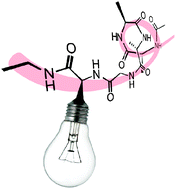Peptide-based fluorescent biosensors
Abstract
The use of fluorescent techniques in biological research is widespread. Many of the techniques rely on the use of fluorescent genetically-encoded tags (namely GFP and its different variants), but small molecules and


 Please wait while we load your content...
Please wait while we load your content...